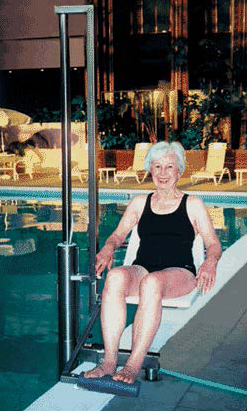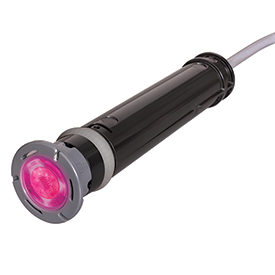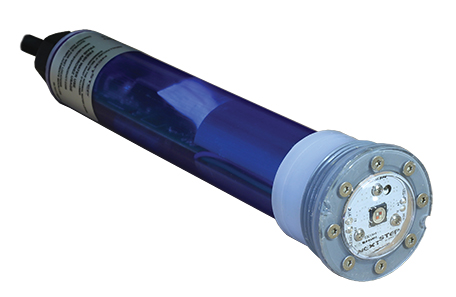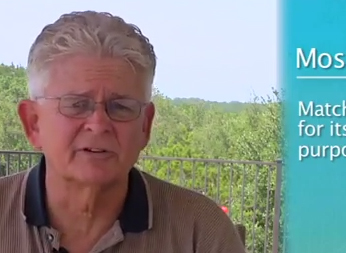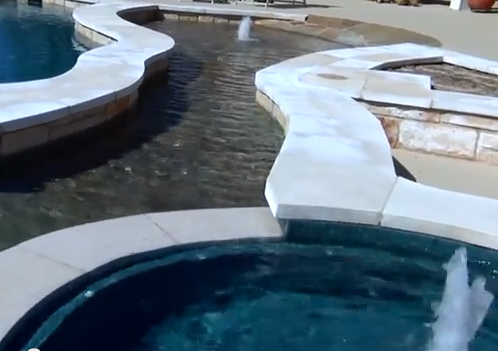spa
Many times in the past 15 years, articles published by WaterShapes have referred to water as "the main ingredient" when it comes to pools, spas, fountains, ponds and all of the other forms of contained, controlled water. I'm willing to accept that assertion and have probably offered it myself a time or two. Here, however, I want to
Custom Molded Products (Newman, GA) is distributing the JetArray Inline Therapy Jet by Sultan Products.…
Please don't hold it against me: I was an English Literature major in college.
My specialty was the old stuff - Shakespeare's plays, the comedies of the Restoration period, poets from John Milton to Alexander Pope, and the early novelists, especially Jane Austen. It was mostly a pursuit of things written before about 1820 and kept me more than busy.
About eight months after I graduated in 1977, I took off and traveled the world for the best part of a year, spending May and June of 1978 in England and devotedly seeking out places where my favorite subjects of study had lived and worked and found inspiration. I went to the places where the great theaters had been and tramped along rivers and city streets listening for echoes and seeing if there was anything left that would attach me to the life experiences of my literary heroes.
It was all fairly thin until I reached the city of Bath, where Jane Austen had centered so many scenes in her great novels. Back in 1978, the place hadn't changed all that much since she'd lived there; it still embodied a mood and architectural style that easily carried me back 200 years to her time.
For all of her virtues, however, Miss Austen wasn't hugely impressed by Bath or at all into the one feature of the city that most thoroughly captured my imagination while I was there - that is, the natural watershapes that gave the town its name and had defined its function at least since the Romans reached England nearly 2,000 years earlier.
I'm mindful of the fact that I took this trip well before watershaping came to define my own function and life. Even then, however, I was blown away by the thought that the Romans had settled in this place around 70 A.D. and had converted the site's warm springs into a system of pools to serve as an early spa.
Not much is visible from those times; in fact, the baths were basically forgotten and buried after the Romans left a couple centuries later and were only rediscovered in Shakespeare's time. But seeing the still-visible parts of the Roman baths in person - and absorbing all I could about their inner workings from a memorable museum exhibit - I felt as though I was witnessing history in the grandest and most personal way possible.
When you take that history and surround it with graceful Georgian architecture, the package Bath offers its visitors is quite complete and unique. And so tasteful, I might add, that I have to think that even a Roman would have been pleased to see their baths set amid such a splendid and sociably neoclassical context.
No, you can't "take the waters" the way they did when Jane Austen was around, but it's well worth a visit: For inspiration, the baths of Bath can't be beat.
Aquatic Access (Louisville, KY) makes the IGAT-180, a lift that provides easy access to and…
Hayward Pool Products (Elizabeth, NJ) offers ColorLogic color LED accent lighting for watershape applications. Easy…
Zodiac Pool Systems (Vista, CA) has acquired the assets of Next Step Products and its…
It doesn't happen every time, but once in a while I'll speak with a prospective client who's done some homework and has reached a conclusion about which manufacturer's equipment should be used on his or her watershaping project.It's nice that he or she is engaged in the process to that fine a level, but as I mention in the video linked below, it really isn't an issue with which a homeowner needs to get involved because
There's a common misperception among designers and builders whose projects carry them beyond a pool and spa and out into the landscape: In large numbers, these professionals believe that low-voltage landscape lighting systems are perfectly safe for use in close proximity to the water. The truth of the matter is that the National Electric Code (NEC) has defined an exclusionary zone of ten feet around pools and spas for these fixtures! That's right: Even with low-voltage
This video is a great example of the phenomenon known as "mission creep": We started out with a discussion of what's involved in making a residential swimming pool and spa accessible to someone who uses a wheelchair - a good and worthy subject on its own - but the project so perfectly illustrates a couple of additional points that we kept the camera rolling. The video covers one specific ramp in fine detail, but I want to stress two more general points about planning for wheelchair access: First, a properly sloped ramp













